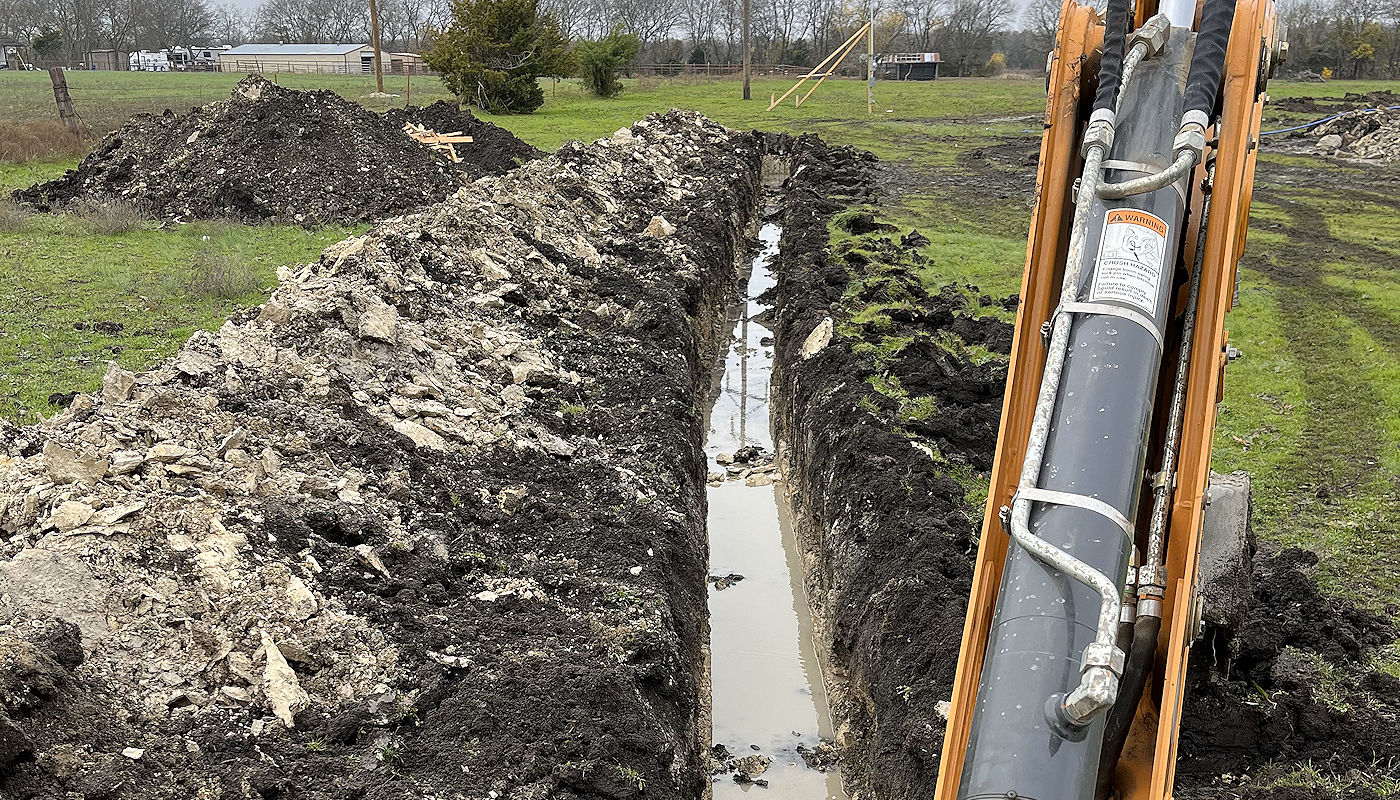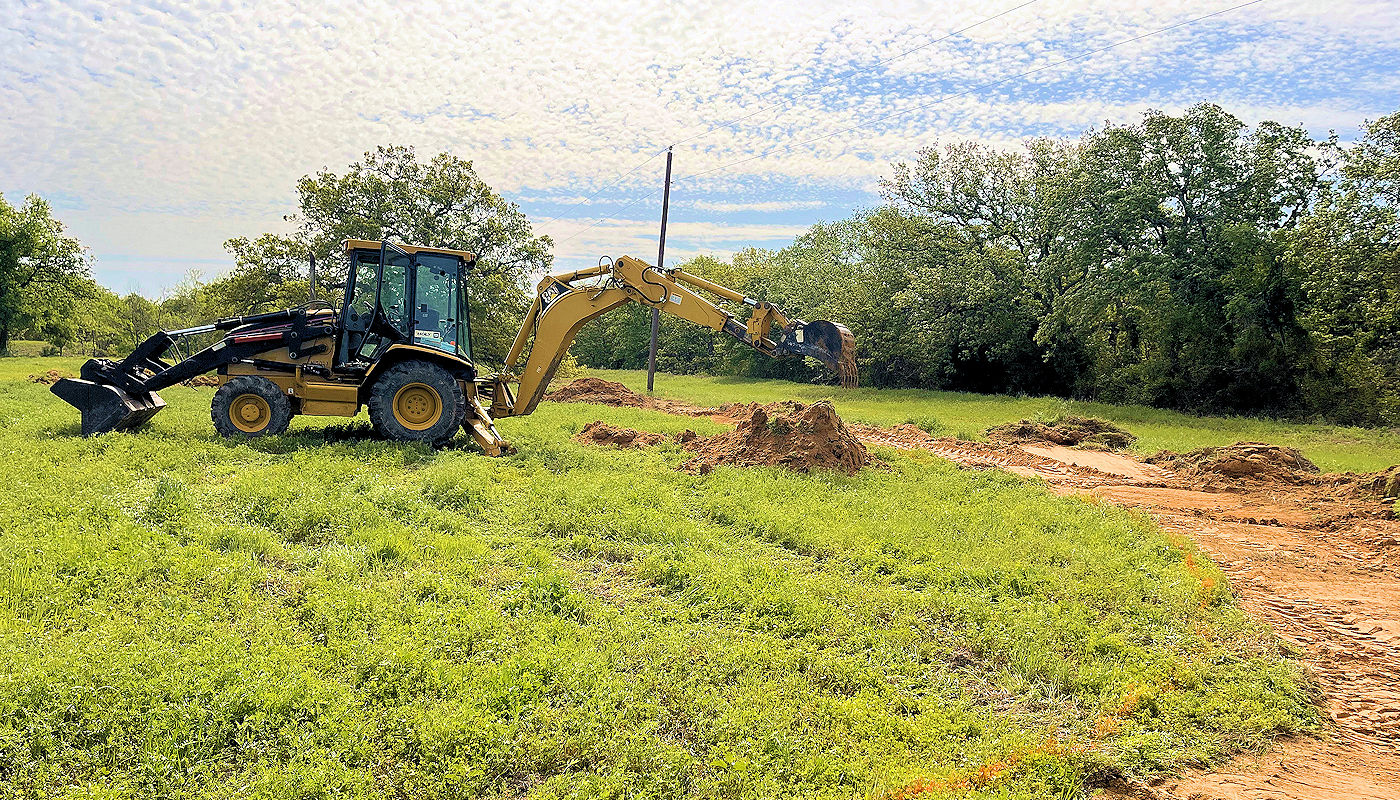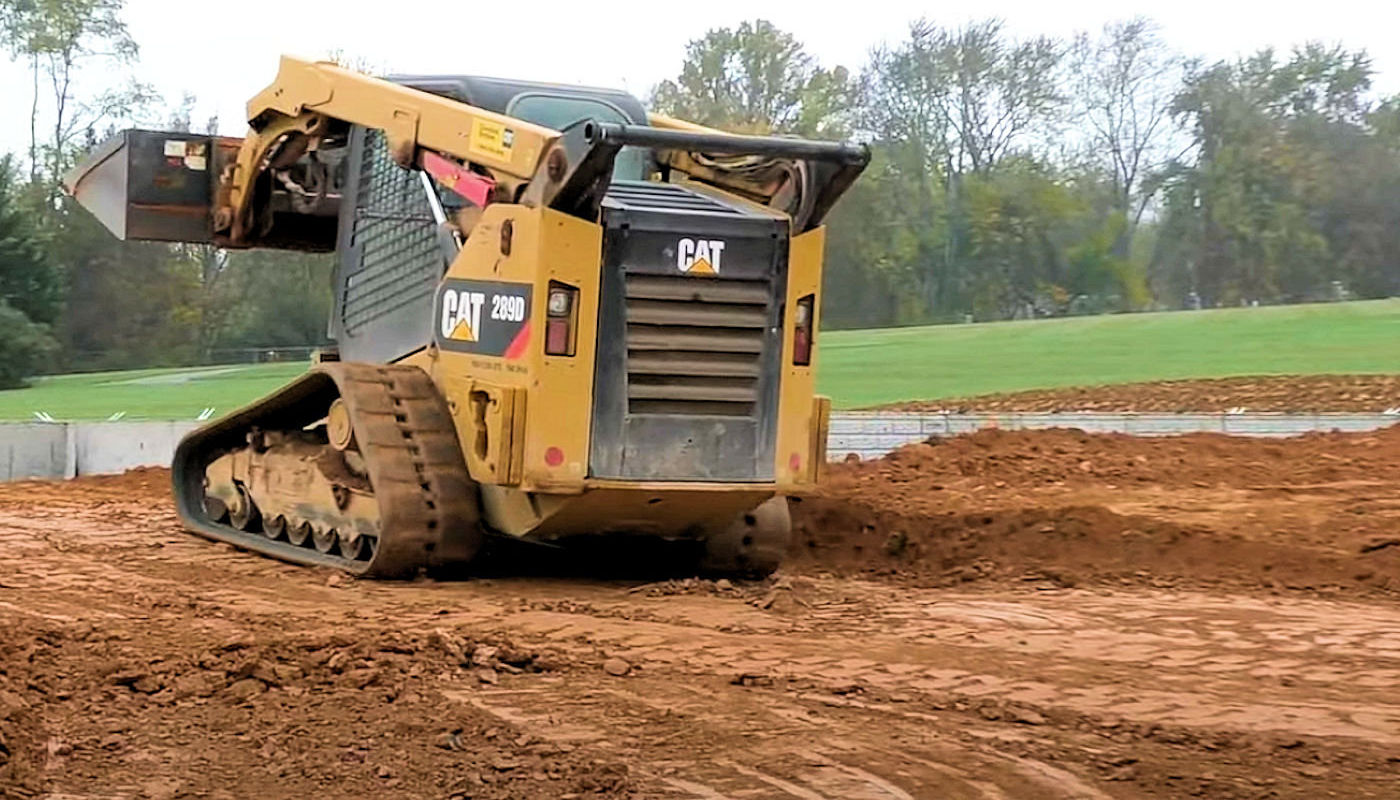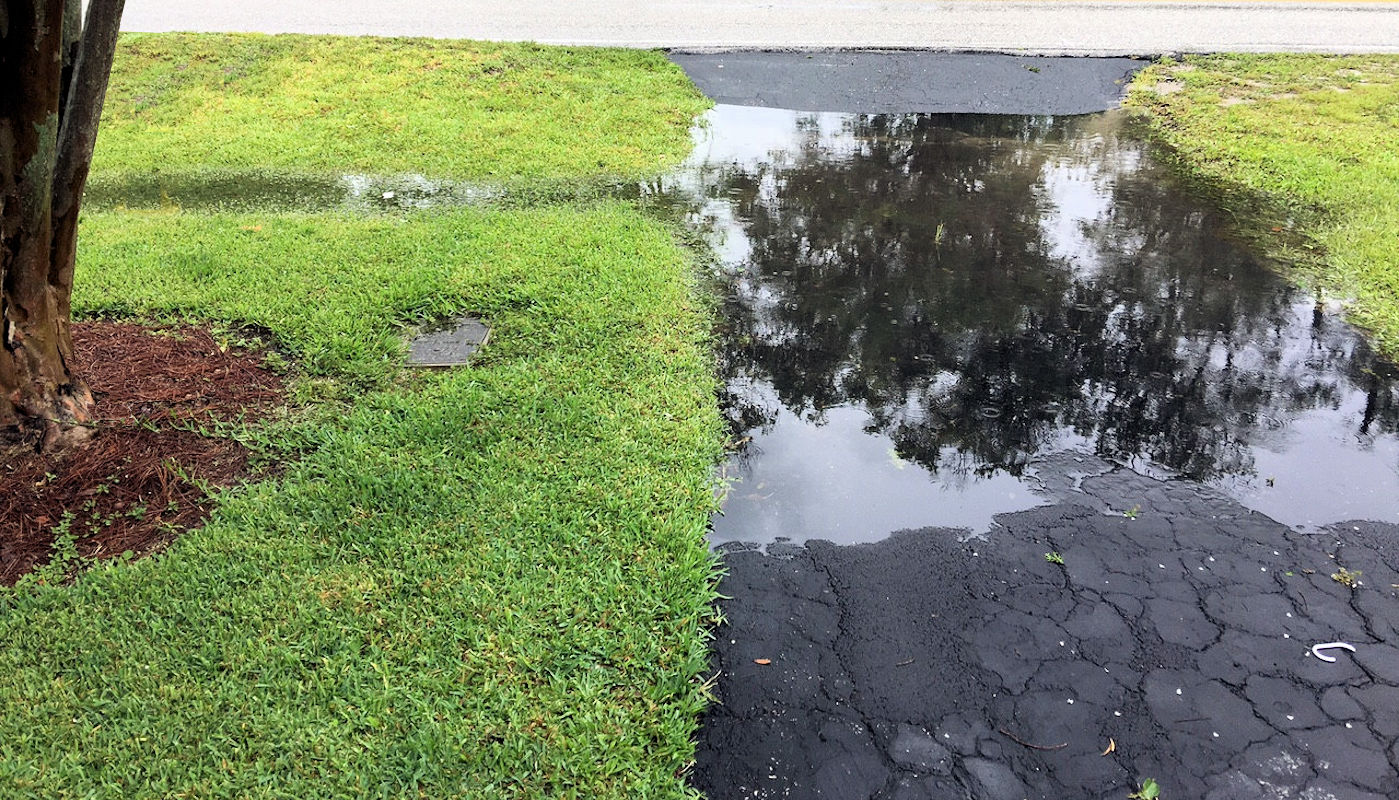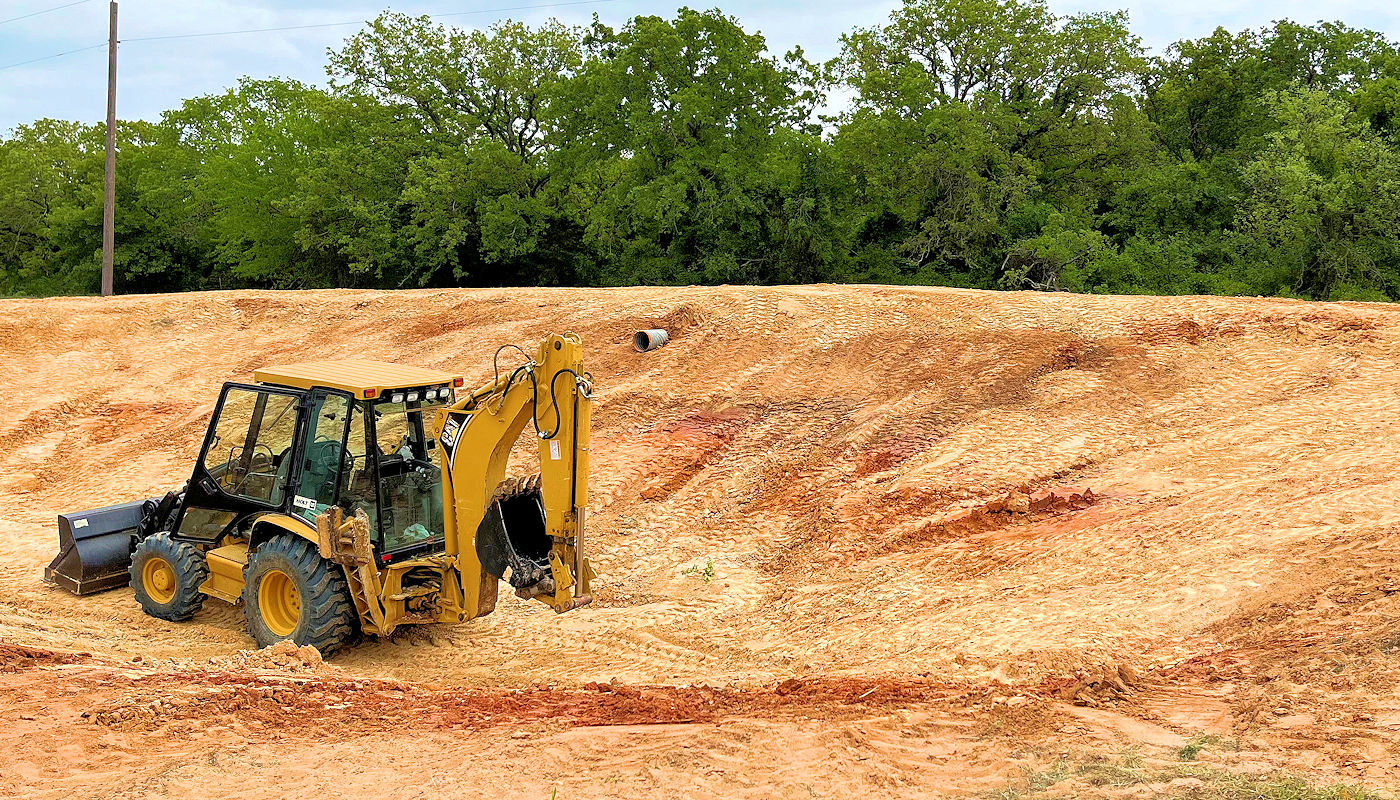

Pond Building Contractor
Pond Building Solutions from Texoma Excavation & Construction
Pond Building Contractor
Pond Building Solutions from Texoma Excavation & Construction
Looking for a reliable pond building contractor in the Texoma region? Texoma Excavation & Construction (TEC) offers expert pond construction services to enhance your property’s beauty and functionality. Our experienced team specializes in designing and building custom ponds for various purposes, including recreational, agricultural, and aesthetic uses. We use advanced techniques and high-quality materials to ensure your pond is durable and environmentally friendly. Whether you need a small garden pond or a large agricultural reservoir, TEC is committed to providing exceptional service and results. Contact us today to start your pond building project and enjoy the benefits of a professionally constructed pond.
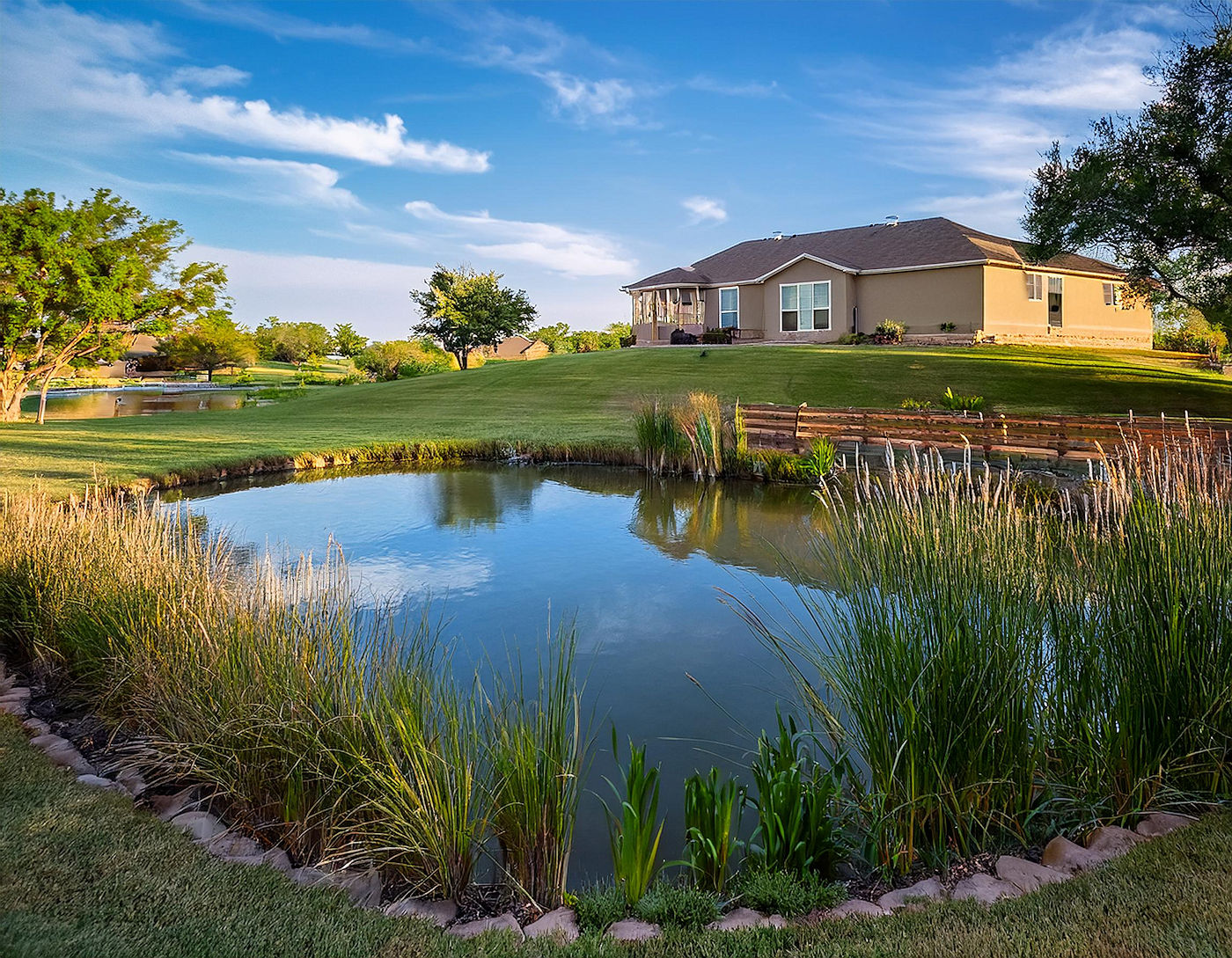
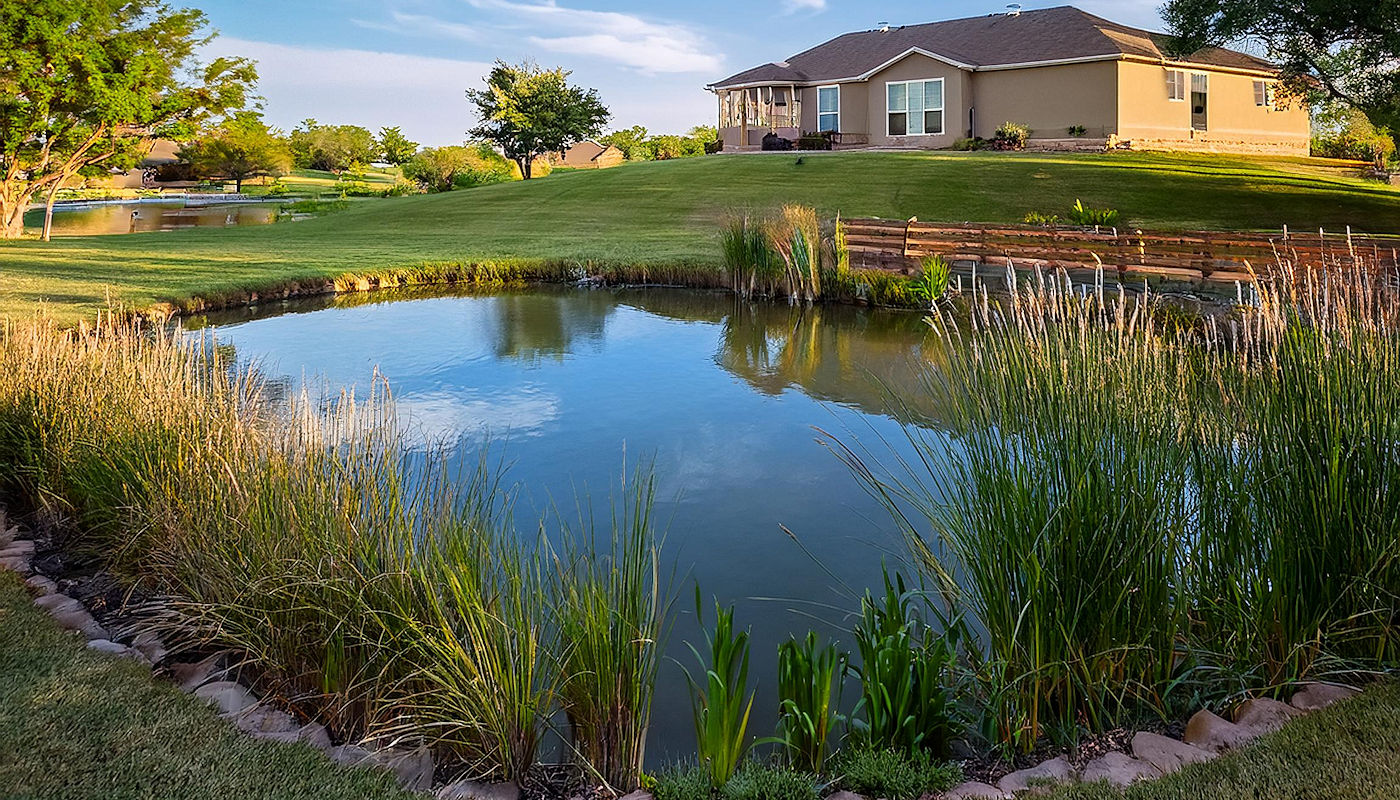
Weigh the Pros and Cons of
Building a Pond
There are many reasons why you may consider adding an excavated pond to your property. You may want to enhance the beauty and value of the property as a pond can create a focal point in the outdoor space, adding to its overall appeal and marketability.
A pond can also provide recreational activities and opportunities such as fishing, boating, swimming, hunting, or simply relaxing by the water. This can enhance your quality of life and well-being, as well as your guests, making your home a more welcome gathering place.
If your land is large and rural enough, you might consider its use in providing a habitat for wildlife as a pond can attract various animals and birds that depend on water for survival, such as ducks, frogs, turtles, dragonflies, and more. If you have a ranch or farm, a pond can provide water for irrigation, livestock, fire protection, and domestic use. This can conserve water resources and reduce the dependence on external water sources.
Of course, building and maintaining a pond requires planning, work, and funds. Depending on the location, size, and purpose of the pond, one may need to obtain a permit, hire a contractor, install a liner, aerator, or pump, and monitor the water level, quality, and wildlife. It is important to weigh the pros and cons of owning and maintaining a pond and consider the desired outcomes before deciding to add one to your property. We offer this page and other articles on our Texoma Excavation & Construction website to help you with these decisions.
General Pond Building Steps
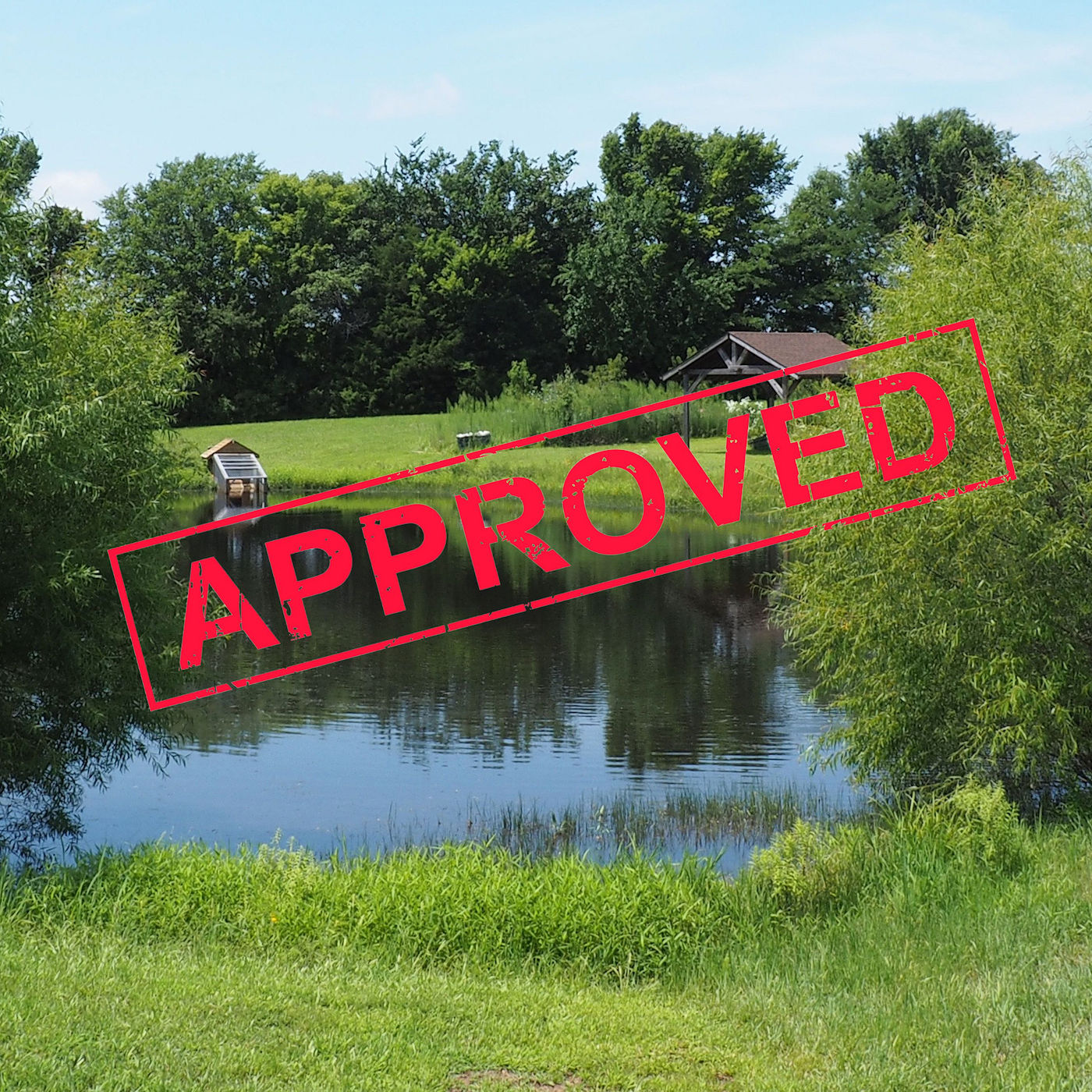

Verify Permitting Requirements in Your Area
What type permits are required for excavation type pond building on private property in Texas and Oklahoma in general and the Texomaland part of the state in particular? Who has the rights to the water and do different excavation pond uses such as purely aesthetic uses, or more specific uses such as: swimming, fish stocking, wildlife refuge, retaining pond, or stock pond for watering cattle, etc., affect water ownership and permitting issues? Are there waivers for ponds of a certain size?
The pond building and excavation process may or may not require a level change permit depending on various factors, such as the location, size, connection, and impact of the pond on the surrounding environment. Different states and agencies have different regulations and requirements for pond construction and maintenance.
Since our company is located in the Texomaland area of north Texas/southern Oklahoma around and east of Lake Texoma, our permitting information at present is focused on those states and area. Note that we pose as many or more questions as provide comprehensive answers in this webpage. We provide resources so that you can get more information and be better prepared to speak to a pond building contractor about your plans.
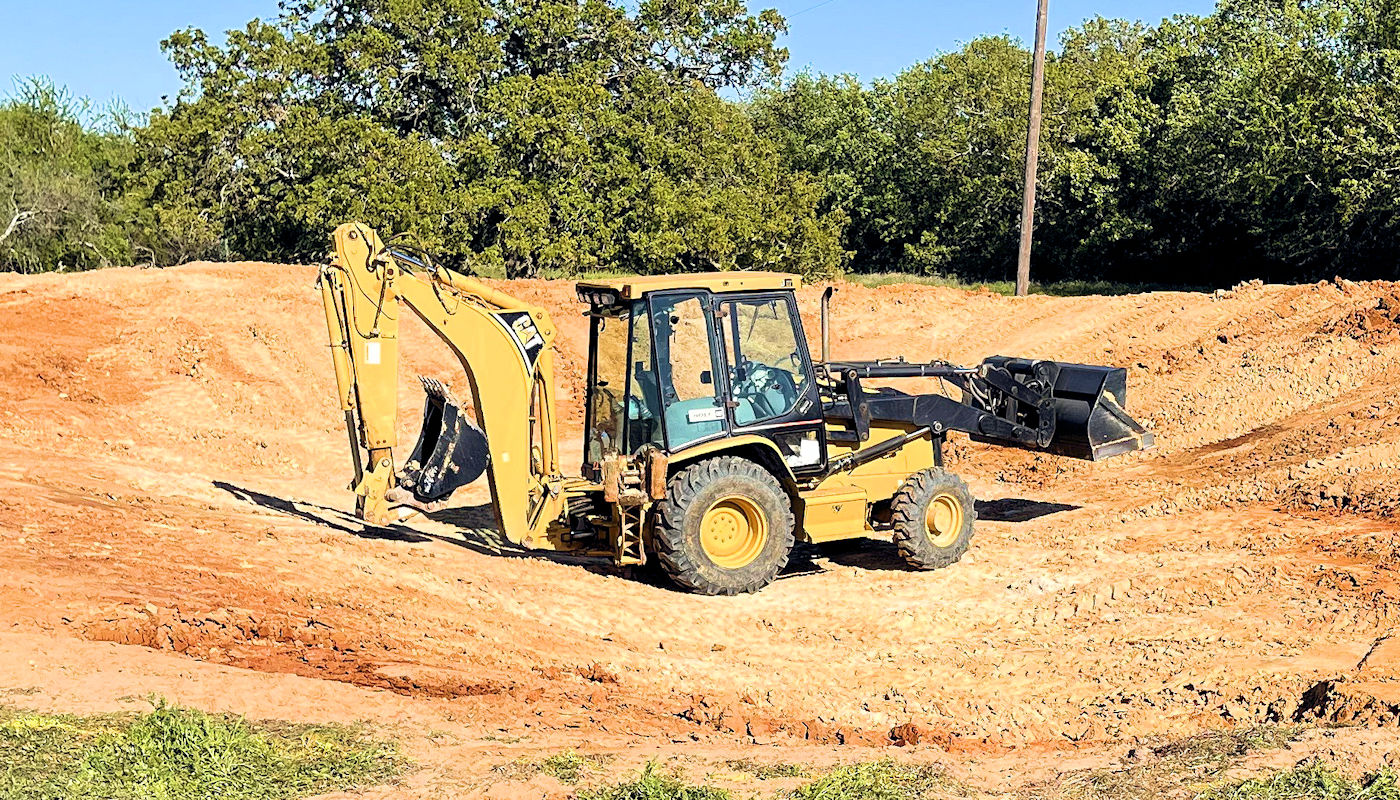
A Note About Excavated Ponds
Excavated ponds are the simplest to build in relatively flat terrain. Because their capacity is obtained almost solely by excavation, their practical size is limited. They are best suited to locations where the demand for water is small. Because excavated ponds can be built to expose a minimum water surface area in proportion to their volume, they are advantageous in places where evaporation losses are high and water is scarce. The relative ease of their construction, their compactness, their relative safety from flood, flow damage, and their low maintenance requirements make excavated pond as the type built by Texoma Excavation & Construction popular in many sections of the country.
Two kinds of excavated ponds: (1) fed by surface runoff; (2) fed by ground water aquifers, usually layers of sand and gravel. Some ponds may be fed from both of these sources.
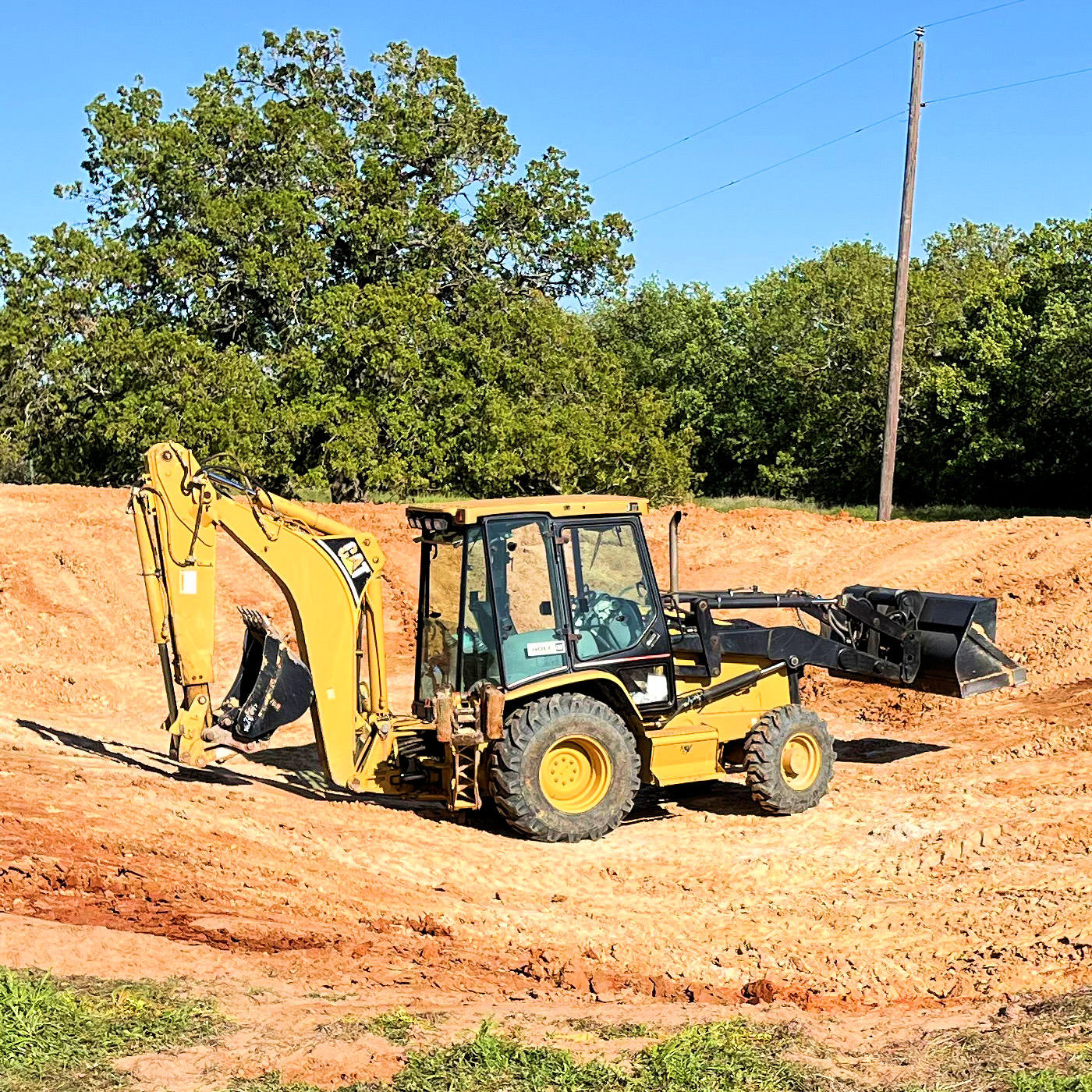
The general location of an excavated pond depends largely on the purpose or purposes for which the water is to be used and on other factors. The specific location is often influenced by the topography of the property.[1]
Excavated ponds fed by surface runoff can be located in almost any kind of topography. They are, however, most satisfactory and most commonly used in areas of comparatively flat, but well-drained terrain. A pond can be located in a broad natural drainageway or to one side of a drainageway if the runoff can be diverted into the pond. The low point of a natural depression is often a good location. After the pond is filled, excess runoff escapes through regular drainageways.
Excavated ponds fed by ground water aquifers can be located only in areas of flat or nearly flat topography. If possible, they should be located where the permanent water table is within a few feet of the surface.[1]
Finding the Ideal Location for Your Excavated Pond:
The ideal location for an excavated pond depends on several factors, such as:
Resources
Past Excavation Projects
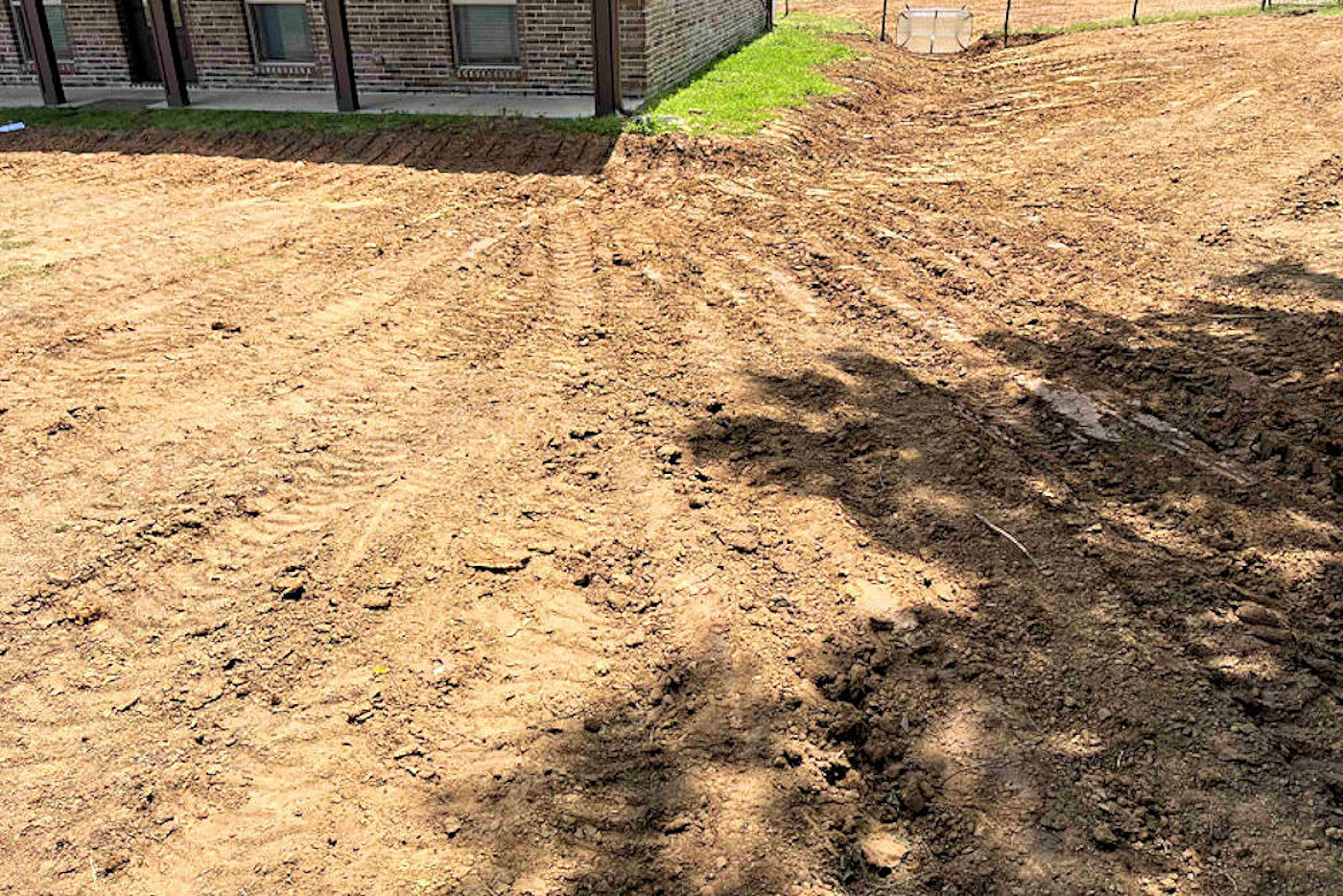
The above image shows Texoma Excavation & Construction digging a new power supply ditch and tying into the existing live power supply near Melissa, Texas. The paver stones were salvaged to be replaced. All the PVC, electrical conduit, phone lines, and small electrical lines that were destroyed were anticipated.

Pond building is a complex process that requires careful planning and execution. After all the planning, the first construction step is excavation of the area where the pond will be located. The pond excavation work shown above was near Montague, Texas. When this pond is full, it will be 7′ 2″ deep at its deepest point.
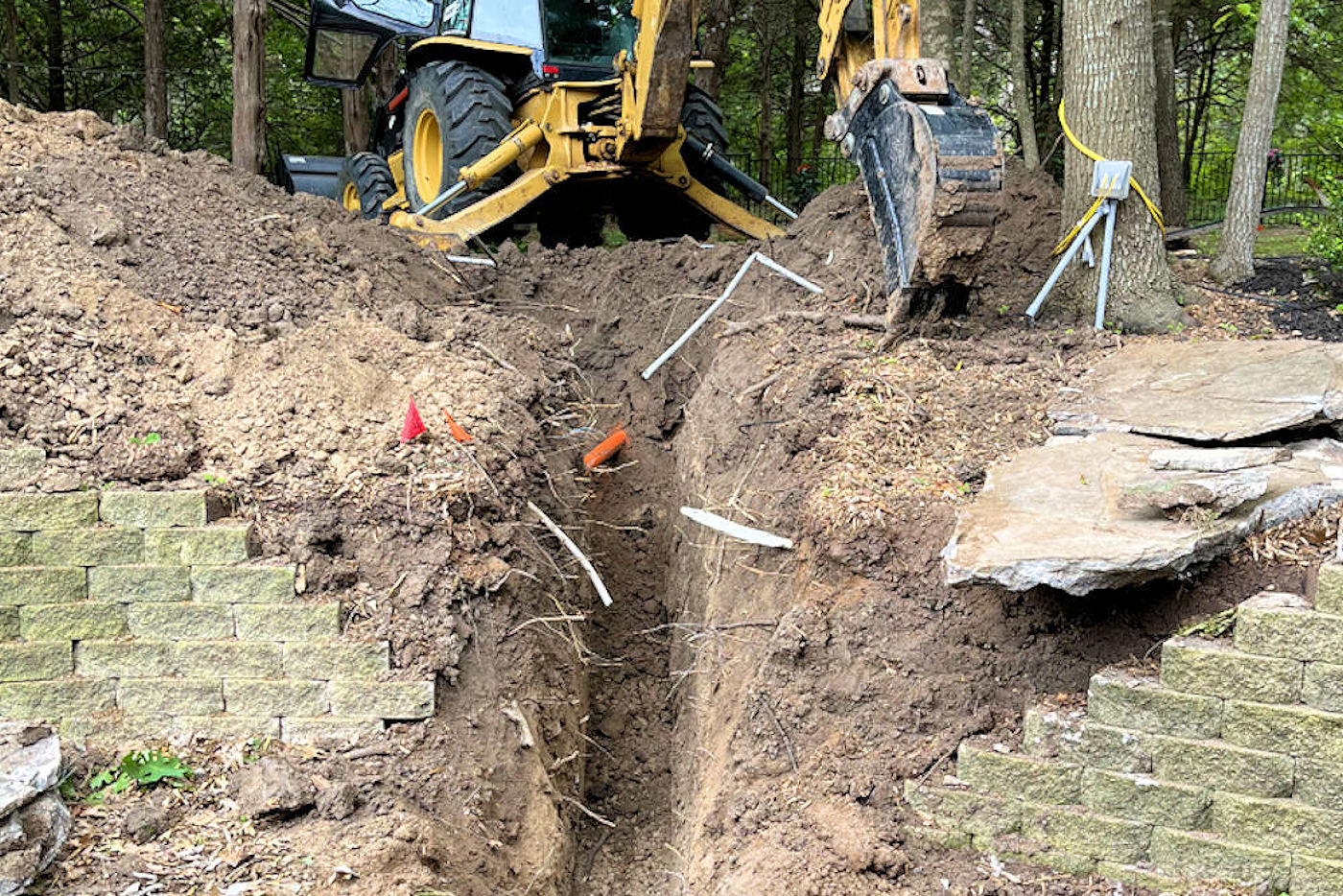
Residential drainage excavation work done near Denison, Texas. This client had some significant drainage problems during periods of high-volume runoff and tried to excavate a ditch to channel water away from his house. We were hired to polish the existing ditch and spread some grass seed.


